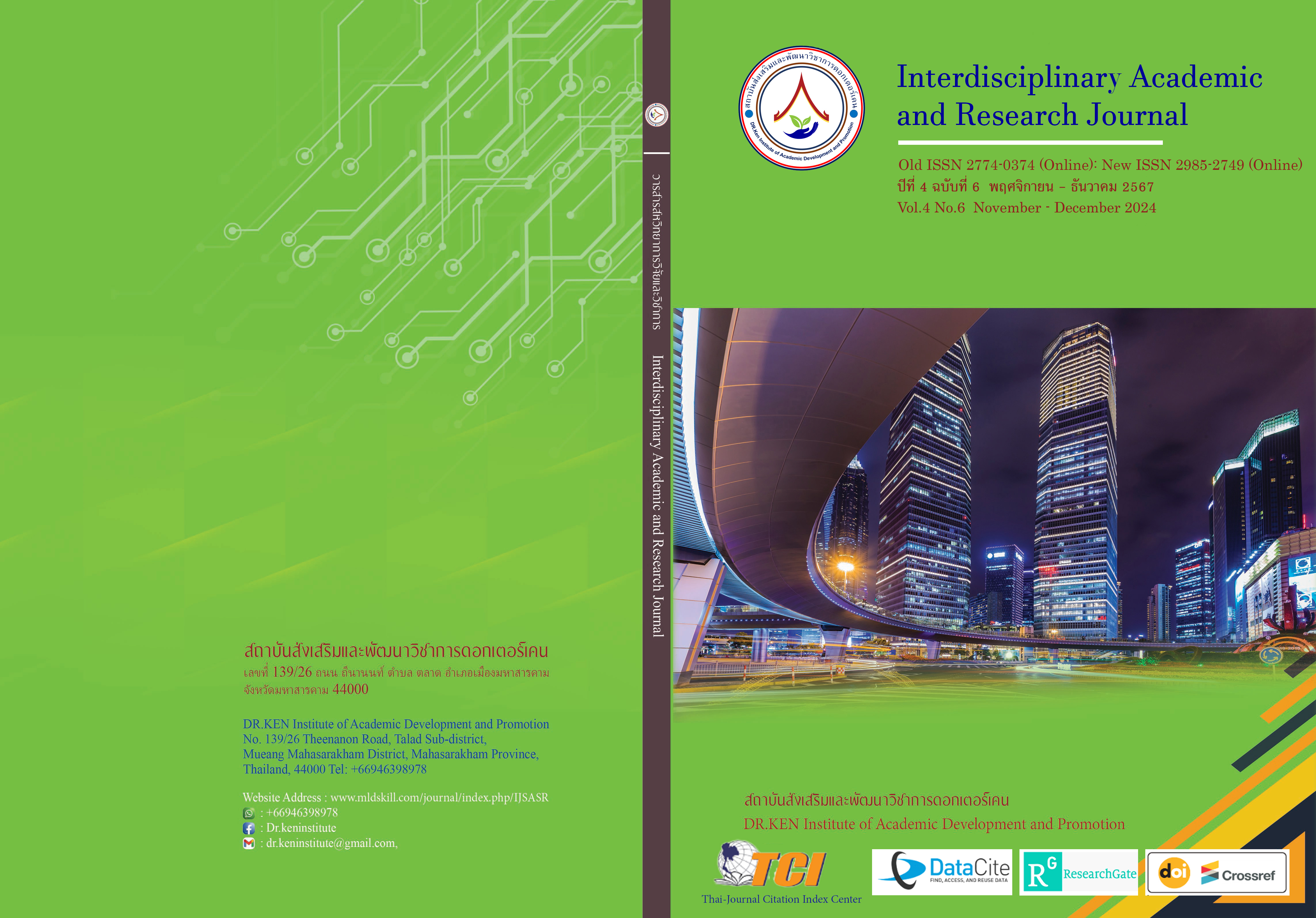Influence of Normal Quality and Functional Quality of the Business Environment on Business Environment Satisfaction: Mediating Role of Perceive Value of the Business Environment and Government Credibility
DOI:
https://doi.org/10.60027/iarj.2024.282183Keywords:
Normal Quality (NQ); Functional Quality (FQ); Business Environment; Satisfaction (SA) ; Perceive Value (PV) ; Government Credibility (GC)Abstract
Background and Aims: This section could benefit from a clearer and more structured presentation of the research problem, methodology, results, and conclusion. Currently, the sentences are lengthy and the sequence of ideas is somewhat unclear. To improve this, the research objectives and methodology should be presented more distinctly, followed by a concise summary of the findings and their implications. For example, instead of immediately diving into specific details about customer satisfaction theory and service quality, it would be beneficial to start by outlining the broader significance of the study. This section could be shortened without losing important information. It is currently too wordy, particularly in its description of the theoretical background and methodology. The details about the theoretical frameworks used (e.g., customer satisfaction model service quality theory and new public service theory) could be briefly summarized, focusing instead on their relevance to the study.
Methodology: The methodology could be described more succinctly. For example, mentioning the use of structural equation modeling (SEM) and AMOS software to analyze the data is important, but the details about the software and the number of participants in the quantitative study could be integrated more smoothly. The focus should be on explaining why these methods were chosen and how they contributed to achieving the research objectives.
Results: The section on findings could be expanded to highlight the key contributions of the study. The results about the functional quality of the business environment having a greater impact than the normal quality on business environment satisfaction should be explained more clearly in terms of their practical implications. Additionally, the mediating role of perceived value and government credibility should be highlighted as major contributions to the literature on business environment satisfaction. The use of language could be simplified while still maintaining an academic tone. Phrases like "compared with 'the normal quality of business environment,' 'the functional quality of business environment' has the greatest impact on 'business environment satisfaction'" could be rewritten in a more fluid and reader-friendly way. Simplifying complex clauses would enhance readability and engagement.
Conclusion: The findings highlight that functional quality has a greater impact on business environment satisfaction than normal quality, with perceived value and government credibility acting as key mediators. Simplifying the language and clearly presenting these findings would improve comprehension while emphasizing the study's practical implications.
References
Alizadeh, A. (2013). Developing a model for citizen satisfaction with public sector services based on rough sets theory: A case study of Tehran municipality. Technical Bulletin, 20(5), 795-802.
Chen, Q., Ding, Y., & Dun, S. (2021). Research on business environment impact mechanism based on Bayesian network. Soft Science, 35(1), 126-133.
Fan, B., & Jin, J. (2016). The mechanism of influence of public service supply on public service perceived performance: The mediating role of government image and the moderating effect of public participation. Management World, 10, 50-61.
Han, J. (2020). Credit is the most basic business environment. China Credit, 9, 112-114.
Huang, X., & Zeng, Z. (2020). Building a business environment with positive interaction between government and market. University Theoretical Front, 4, 80-89.
Lan, X., & Fan, F. (2019). Government total quality governance: The way to build public service quality in the new era. Be Realistic, 4, 15-20.
Li, S., & Gong, P. (2019). Planning evaluation: Practice and prospect. Chinese Administration, 8, 14-16.
Liang, C., Dai, J., & Zhu, L. (2015). A research on the application of the structural equation model to evaluation of public services public satisfaction. East China Economic Management, 29(2), 123-129.
Liang, P. (2018). Promoting the formation of a system mechanism for continuous improvement of the business environment. National Governance, 41, 22-25.
Marsh, H. W., Wen, Z., & Hau, K. T. (2004). Structural equation models of latent interactions: Evaluation of alternative estimation strategies and indicator construction. Psychological Methods, 9(3), 275-300.
Shang, W. (2020). The impact of business environment on innovation performance of foreign-funded enterprises. International Economic Cooperation, 5, 127-134.
Van Ryzin, G. G., Villoria, M., & Lavena, C. F. (2013). Social and political consequences of administrative corruption: A study of public perceptions in Spain. Public Administration Review, 73(1), 85-94.
Wang, N. (2002). Representativeness or typicality? - The attributes of the case and the logical basis of the case study method. Sociological Research, 5, 123-125.
Xu, Z., & Ruan, Z. (2019). Business environment, technological innovation and firm performance: Based on empirical evidence at the provincial level in China. Journal of Xiamen University: Philosophy and Social Sciences Edition, 5, 123-134.
Downloads
Published
How to Cite
Issue
Section
License
Copyright (c) 2024 Interdisciplinary Academic and Research Journal

This work is licensed under a Creative Commons Attribution-NonCommercial-NoDerivatives 4.0 International License.
Copyright on any article in the Interdisciplinary Academic and Research Journal is retained by the author(s) under the under the Creative Commons Attribution-NonCommercial-NoDerivatives 4.0 International License. Permission to use text, content, images, etc. of publication. Any user to read, download, copy, distribute, print, search, or link to the full texts of articles, crawl them for indexing, pass them as data to software, or use them for any other lawful purpose. But do not use it for commercial use or with the intent to benefit any business.
















.png)


